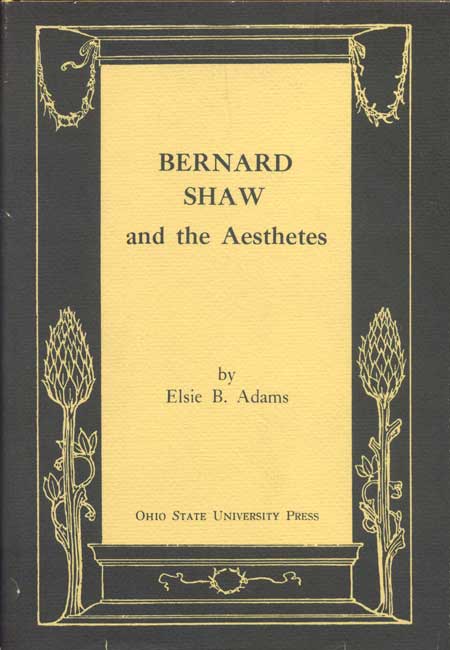| click here to read the complete text of the book | leave / read comments and critiques of the book |

Bernard Shaw and the Aesthetes
Elsie B. Adams
Though a genius of his stature defies any easy categorization, George Bernard Shaw was enough a man of his age not to have escaped the undeniably pervasive influence of the English aesthetic movement. The movement was at its height when he began writing and publishing in the 1870s and remained an active force in British artistic and literary circles during a substantial part of his long career.
The movement had two distinct branches, and Shaw found himself sympathetic to at least some of the tenets of both. Like the Pre-Raphaelites, he based his art on observed phenomena; and, with Ruskin and William Morris, he saw art as the product of a healthy milieu and a genuine religious impulse.
With the fin-de-siècle aesthetes, who often tended to languish in a haughty and fashionable despair that he rejected, the ever vigorous Shaw held in common the conviction that art does not uphold conventional morality and that art must be free from censorship. It is the artist’s business, he maintained, to create without restriction a meaningful form, appropriate and faithful to his inner vision—to depict a reshaped, motivated, and articulated reality that, as Oscar Wilde put it, serves as a model for life.
Though Shaw was often at pains to dissociate himself from the art-for-art’s-sake faction of the aesthetic movement, he was closer to it than he was ready to admit or realize. The genuine artists (as distinct from the dilettantes and artistic hangers-on) who appear in his plays are alienated, temperamental, and sensitive—often hypersensitive—individuals; they devote themselves to the perfection of their craft and are not afraid of being thought immoral.
Elsie B Adams’ examination of Shaw’s plays as the product of a unique artistic temperament at work in an intellectual climate that was shaped by the aesthetic movement reveals a wealth of new subtleties in them. With remarkable insight, she succeeds in placing Shaw more precisely within his own time, and in defining more exactly that aesthetic sensibility that served to shape his own.
Elsie B. Adams is assistant professor of English at San Diego State College.
| 1973 310 pp. | This title is no longer available in a traditional print edition. Click here for free access to the book's full text. |

